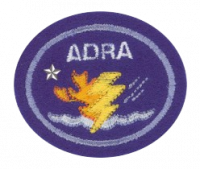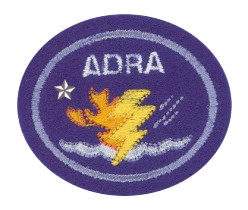Especialidades JA/Resposta a emergências e eesastres - Avançado/Respostas
Nível de Habilidade
2
Ano
2009
Version
26.04.2024
Autoridade de Aprovação
Conferência Geral
| Note: The editors of this answer book feel that there is an error in the official version of this requirement. More Information Normally advanced honors require earning the basic honor, but the official version of the requirements for this honor don't say this. Without the basic honor patch where will you place your advanced star? We feel this is an oversight and that logic and honesty dictates you earn the basic honor if you sew on the basic patch.
|
Para obter dicas e instruções, veja: Resposta a emergências e desastres.
1
1a
- Typhoon Rusa
- Typhoon Rusa was the 10th typhoon of the 2002 Pacific typhoon season. Rusa brought heavy rains and flooding to South Korea, amounting to 36 inches (910 mm) in some areas. 113 people were killed in the country, making it one of the deadliest typhoons to hit South Korea. Extensive crop and property damage amounted to $6 billion (2002 USD).
1b
1c
1d
1e
1f
1g
1h
1i
2
A well rehearsed emergency plan developed as part of the preparedness phase enables efficient coordination of rescue Where required, search and rescue efforts commence at an early stage. Depending on injuries sustained by the victim, outside temperature, and victim access to air and water, the vast majority of those affected by a disaster will die within 72 hours after impact.
Organizational response to any significant disaster - natural or terrorist-borne - is based on existing emergency management organizational systems and processes: the Federal Response Plan (FRP) and the Incident Command System (ICS). These systems are solidified through the principles of Unified Command (UC) and Mutual Aid (MA)
Recovery
The aim of the recovery phase is to restore the affected area to its previous state. It differs from the response phase in its focus; recovery efforts are concerned with issues and decisions that must be made after immediate needs are addressed. Recovery efforts are primarily concerned with actions that involve rebuilding destroyed property, re-employment, and the repair of other essential infrastructure. An important aspect of effective recovery efforts is taking advantage of a ‘window of opportunity’ for the implementation of mitigation measures that might otherwise be unpopular. Citizens of the affected area are more likely to accept more mitigation changes when a recent disaster is in fresh memory.
3
A household Emergency Supply Kit should have the following items in it:
- Portable radio with extra batteries
- Flashlights (and extra batteries)
- Drinking water (4 liters
 per day for each person for three days)
per day for each person for three days) - Canned food
- Manual can-opener
- First aid kit
- Essential Medications
- Fire extinguisher
- Work gloves and goggles
- Wrenches (for turning off gas & water lines)
- Standard phone (not needing an external power source)
- Blankets, sleeping bags
- Warm clothing
- Plastic bags for waste
- Copies of important documents such as birth certificates and insurance policies, sealed in a water-proof container.
- Family emergency contact phone numbers.
- Pet supplies
- Pet food
- Crate/carrier
- Leash
- Photo (in case of separation)
Check your kit every six months and replace medications and food. Check the batteries too.
Remember that during a disaster, electricity might not be available for an extended period of time. This is why you will need battery-powered equipment. Also, without electricity, refrigerated foods will spoil, so non-perishable foods should be on hand. Another reason for stocking non-perishable foods is that you can leave them in the disaster kit without worrying that they will spoil over time.
4
As long as every room is represented in roughly the correct location, and all windows and doors are indicated, the floor plan does not have to be 100% accurate for planning purposes. Each room should have two escape routes (through a door or if necessary, through a window).
5
Here are a few Bible stories relevant to this requirement in case you have difficulty thinking of some.
| Story | Where found |
|---|---|
| Noah's Flood | Genesis 6-9 |
| Job's First Test | Job 1:6-22 |
| Abraham's Drought | Genesis 12:10-20 |
| Joseph's Drought | Genesis 41-47 |
| Absalom's revolt | 2 Samuel 15-18 |
| Elijah's Drought | 1 Kings 17 |
| Nebuchadnezzer captures Jerusalem | Daniel 1 |
6
If you are working on this honor as a club, have each member present his findings. If you are doing this in a large club, it's OK to break into smaller units and present the information to the smaller group. If making a video or skit, involve everyone who is working on the honor. You can also make a presentation to your church.
References
Disaster Response Guide from the ADRA or ACS national office



